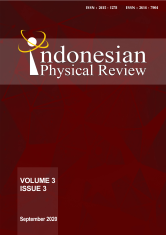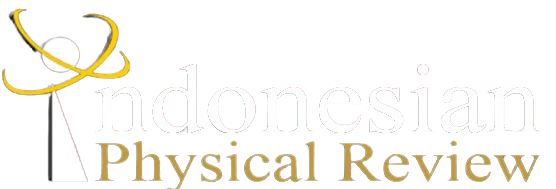APLIKASI METODE SELF-POTENTIAL UNTUK PEMETAAN BAWAH PERMUKAAN DI AREA KAMPUS ITK
DOI:
10.29303/ipr.v3i3.65Downloads
Abstract
Identified subsurface composition remains one of the important things in development, such as finds out potential that is below the surface, this research in Institut Teknologi Kalimantan Campus (ITK). This study aims to identify distribute potential values and finds out the source of anomalies in the ITK Campus area. This study uses the Self-Potential method with a fixed-base technique. The data obtained in the form of potential difference (delta V) data, base potential data and measurement point coordinates. The data was corrected by daily base variation, daily correction and reference correction. After obtaining a potential value from the correction at each measurement point, the data processing was done using surfer 11 software. The results of data processing were obtained isopotential contour map and qualitative interpretation which could be seen distribution of potential different values. On the isopotential contour map, slicing of two cross sections selected indicates the source of anomaly. Anomalous potential values of 45 mV to -55 mV indicated anomalous sources namely electrolyte potential in groundwater with positive anomaly values negative up to hundreds of mV. And, there was a potential for a liquid flowwith a positive and negative anomaly ≤ 100 mV
Keywords:
Subsuface self-potential anomalies isopotensialReferences
I. Hidayat, S., & Umar, “Peta Geologi Lembar Balikpapan, Kalimantan Timur.†Pusat Survei Geologi, Bandung, 1994.
M. I. Alim, N. Huda, S. Lestari, and D. Anggoro, “Pemetaan Bawah Permukaan Tanah Lapang Fasor berdasarkan Metode Eksplorasi Potensial Diri,†no. September, pp. 1–4, 2018.
J. . Reynolds, An Introduction to Applied and Environmental Geophysics. Chichester: John Wiley & Sons, 1997.
S. Diah, A. Febriani, and R. Daniyati, “Interpretasi Persebaran Mineral Pasir Besi Menggunakan Metode SP ( Self Potential ) di Desa Kepanjen,†Semin. Nas. Has. Penelit. 2017, no. December 2017, pp. 296–299, 2017.
D. Y. U. Nuha, S. Maryanto, and D. R. Santoso, “Determination of the Direction of Hot Fluid Flow in Cangar Area, Arjuno-Welirang Volcano Complex, East Java Using Self Potential Method,†J. Penelit. Fis. dan Apl., vol. 7, no. 2, p. 123, 2017.
Telford, William Murra, L. P. Geldart, and R. E. Sheriff, Applied geophysics, Second Edi. New York, USA: Cambridge university press, 1990.
A. Susilo, A. T. Sutanhaji, F. Fitriah, and M. F. R. Hasan, “Identification of Underground River Flow in Karst Area Using Geoelectric and Self-Potential Methods in Druju Region , Southern Malang , Indonesia,†vol. 12, no. 21, pp. 10731–10738, 2017.
License
Authors who publish with Indonesian Physical Review Journal, agree to the following terms:
- Authors retain copyright and grant the journal right of first publication with the work simultaneously licensed under a Creative Commons Attribution-ShareAlike 4.0 International Licence (CC BY SA-4.0). This license allows authors to use all articles, data sets, graphics, and appendices in data mining applications, search engines, web sites, blogs, and other platforms by providing an appropriate reference. The journal allows the author(s) to hold the copyright without restrictions and will retain publishing rights without restrictions.
- Authors are able to enter into separate, additional contractual arrangements for the non-exclusive distribution of the journal's published version of the work (e.g., post it to an institutional repository or publish it in a book), with an acknowledgment of its initial publication in Indonesian Physical Review Journal.
- Authors are permitted and encouraged to post their work online (e.g., in institutional repositories or on their website) prior to and during the submission process, as it can lead to productive exchanges, as well as earlier and greater citation of published work (See The Effect of Open Access).





